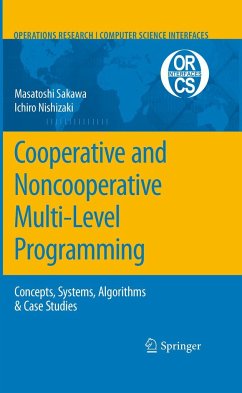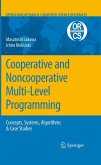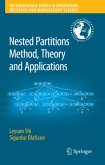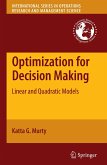To derive rational and convincible solutions to practical decision making problems in complex and hierarchical human organizations, the decision making problems are formulated as relevant mathematical programming problems which are solved by developing optimization techniques so as to exploit characteristics or structural features of the formulated problems. In particular, for resolving con?ict in decision making in hierarchical managerial or public organizations, the multi level formula tion of the mathematical programming problems has been often employed together with the solution concept of Stackelberg equilibrium. However,weconceivethatapairoftheconventionalformulationandthesolution concept is not always suf?cient to cope with a large variety of decision making situations in actual hierarchical organizations. The following issues should be taken into consideration in expression and formulation of decision making problems. Informulationofmathematicalprogrammingproblems,itistacitlysupposedthat decisions are made by a single person while game theory deals with economic be havior of multiple decision makers with fully rational judgment. Because two level mathematical programming problems are interpreted as static Stackelberg games, multi level mathematical programming is relevant to noncooperative game theory; in conventional multi level mathematical programming models employing the so lution concept of Stackelberg equilibrium, it is assumed that there is no communi cation among decision makers, or they do not make any binding agreement even if there exists such communication. However, for decision making problems in such as decentralized large ?rms with divisional independence, it is quite natural to sup pose that there exists communication and some cooperativerelationship among the decision makers.
From the reviews:
"I am very glad to have reviewed this book and believe that it is a great addition to the linear programming and optimization community. Any researcher who has to deal with multi-level linear programming will find this book a valuable reference. It also can be a good collection for university libraries. Some elegant ideas inside the multi-level linear programming formulism, such as ambiguity of human judgments, uncertainty description of feature events in decision-making process, can open doors for future thorough and innovative research." (C. Cai, Journal of the Operational Research Society, Vol. 62 (2), 2011)
"The book presents an in-depth study of bilevel programs making use of models and methods in this class and will satisfy readers interested in this area of mathematical programming. The book also contains many good examples ... . The target audience of the book is upper-level undergraduate and graduate students and researchers in the area of operations research and mathematical programming. The book will also be of interest to practitioners using bilevel modeling and decision-making and decision makers in hierarchical organizations." (Margaret M. Wiecek, Mathematical Reviews, Issue 2011 j)
"I am very glad to have reviewed this book and believe that it is a great addition to the linear programming and optimization community. Any researcher who has to deal with multi-level linear programming will find this book a valuable reference. It also can be a good collection for university libraries. Some elegant ideas inside the multi-level linear programming formulism, such as ambiguity of human judgments, uncertainty description of feature events in decision-making process, can open doors for future thorough and innovative research." (C. Cai, Journal of the Operational Research Society, Vol. 62 (2), 2011)
"The book presents an in-depth study of bilevel programs making use of models and methods in this class and will satisfy readers interested in this area of mathematical programming. The book also contains many good examples ... . The target audience of the book is upper-level undergraduate and graduate students and researchers in the area of operations research and mathematical programming. The book will also be of interest to practitioners using bilevel modeling and decision-making and decision makers in hierarchical organizations." (Margaret M. Wiecek, Mathematical Reviews, Issue 2011 j)









